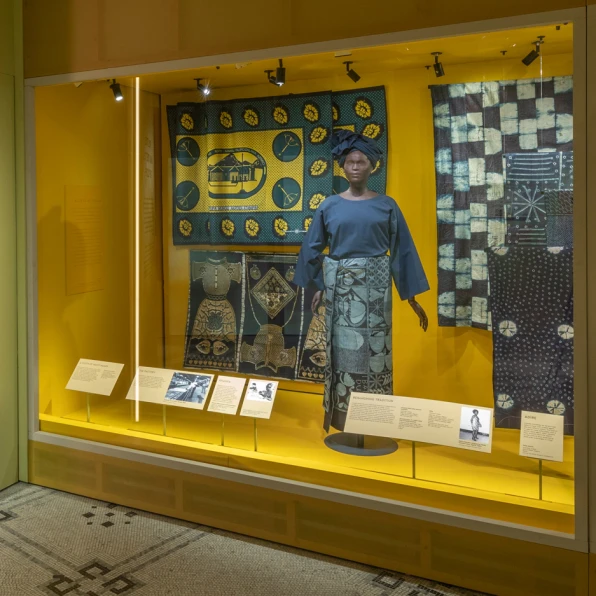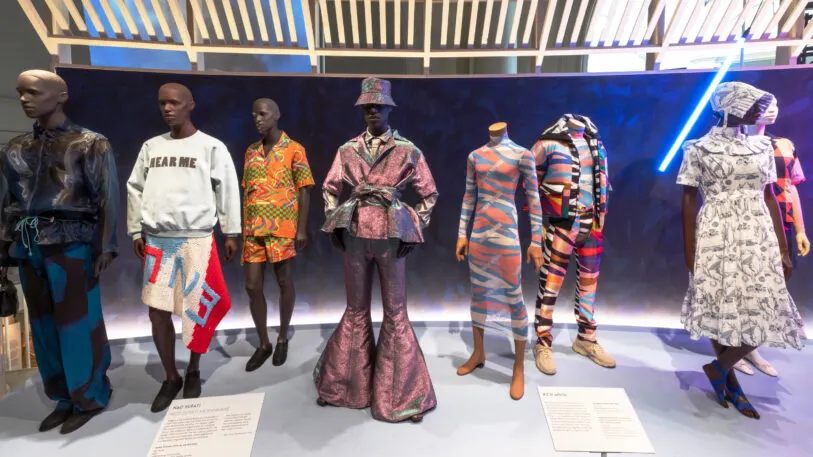African designers are making a splash, from fashion weeks in Dakar and Lagos, to Paris runway shows by South African Thebe Magugu. Here in the U.S., the designers Busayo, Telfar, and Hanifa infuse their collections with aesthetics from their home countries of Nigeria, Liberia, and Congo.
While many Western consumers are now embracing African designers, a new exhibit at the Victoria and Albert Museum in London makes the case that Africa has always had an influence on global fashion. The ambitious show, entitled “Africa Fashion,” captures the multiplicity of fashion across the 54 countries of Africa, tracing its roots from the ancient past to the postcolonial period.
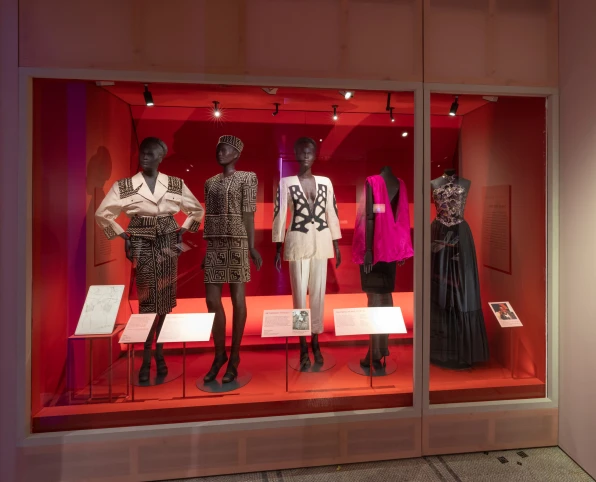
But perhaps most interestingly, it shows how African designers are influencing the global fashion industry with everything from their sustainable practices to aesthetic sensibilities. “We hope the exhibition will give a glimpse of this abundant scene, recognizing that African fashion creatives are shifting the geography of global fashion,” says the project curator Elisabeth Murray.
Christine Checinska, the museum’s first curator of African and African diaspora fashion, explains the long history of African fashion in a comprehensive book that accompanies the show. She points out that African people have always traveled across Europe and Asia, bringing their fabrics, prints, and silhouettes with them, which then go on to influence local fashions across the world.
And yet, because of racism around the world, African fashion has often been misrepresented, being stereotyped as primitive, and portrayed as unchanging. Or else, it’s “an exoticized source of inspiration for designers of the Global North,” Checinska writes. (Consider how designers like Tory Burch and Stella McCartney have been accused of cultural appropriation.)
This exhibit sheds light on the history, complexity, and nuance of African fashion, offering a better appreciation for the work from a number of talented designers from across the continent as well as in the diaspora. Here are four important aspects of African fashion history that help us contextualize the work of African designers today.
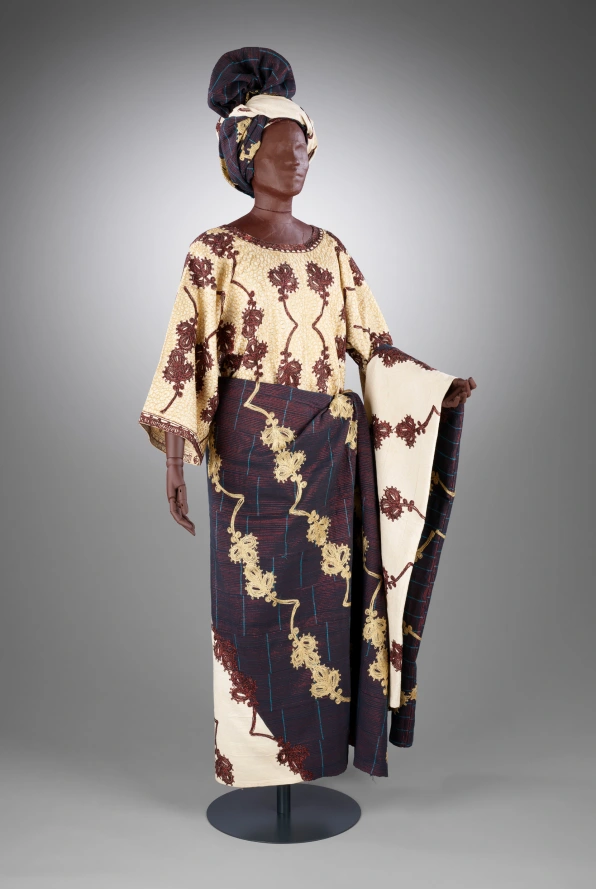
There’s Long Been a Robust Fashion Ecosystem
Shade Thomas-Fahm is not a household name, but she ought to be. Born in 1933, she’s sometimes described as Nigeria’s first fashion designer. At the age of 20, she landed in Britain to train to become a nurse, but when she saw the fabulously dressed mannequins in London stores, she started taking courses at Saint Martin’s School of Art.
When she returned to Nigeria in 1960, the country had just gained its independence from Britain. In this crucial moment, she became one of the first modern African designers, setting up a store called Maison Shade and a factory in the Yaba Industrial Estates to manufacture her garments. She’s known for reimagining traditional Nigerian fabrics, patterns, and colors, and deliberately elevating her creations to fit in with Western notions of “couture.”
In the book, Checinska wrote that Thomas-Fahm also contributed to “the development of a fashion ecosystem that was directly informed by what she experienced overseas,” setting the stage for the hundreds of designers now emerging throughout the continent. Today, African designers often tap into local craftsmanship and workshops to create their garments, and participate in fashion weeks modeled after European versions.
Five Key Fabrics Drive the Designs
Bold prints are key to African fashion. They’re skillfully deployed, modernized, and remixed by contemporary African designers. Western brands and designers sometimes use them as well, and have been accused of cultural appropriation. The exhibit pulls out five distinct textiles that have become foundational to contemporary African designers.
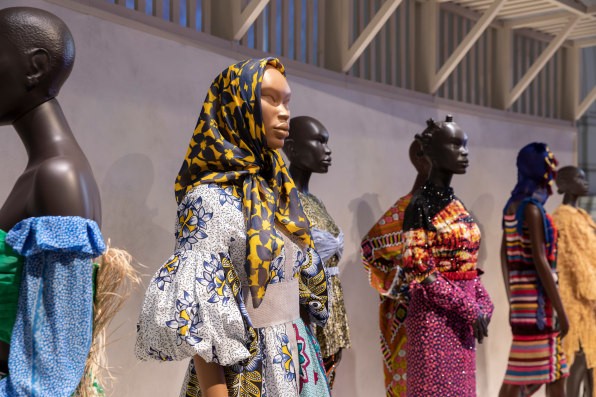
Wax Print
This fabric originated in Java, an island in Indonesia, but in 1846, Dutch traders tried to mass produce it in the Netherlands in order to sell it back to the Javanese. However, the Javanese didn’t like the machine-made cloth, which had little cracks and spots on it. So the Dutch marketed the cloth in West Africa, where the locals appreciated the “marks of imperfection.” This fabric has become popular across Africa and is central to the modern African aesthetic. Indeed, it is now made locally in factories across the continent, with machines incorporating the spots into the final designs.
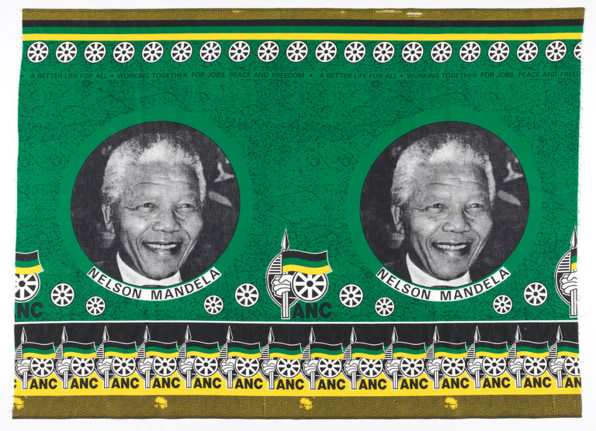
Commemorative Cloth
Throughout Africa, cotton fabric is printed in factories to commemorate important milestones, including the election of politicians. When Nelson Mandela was elected South Africa’s first Black president, and Barack Obama later became America’s first Black president, they each had their faces silkscreened on special commemorative cloth. These fabrics tend to be displayed as decorative items, rather than worn.
